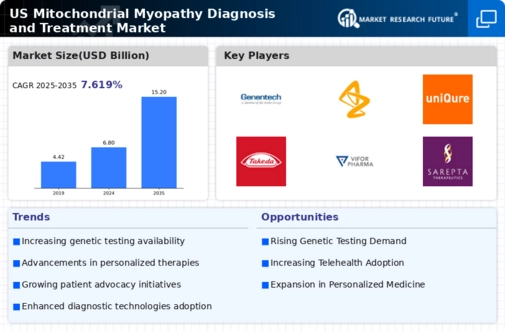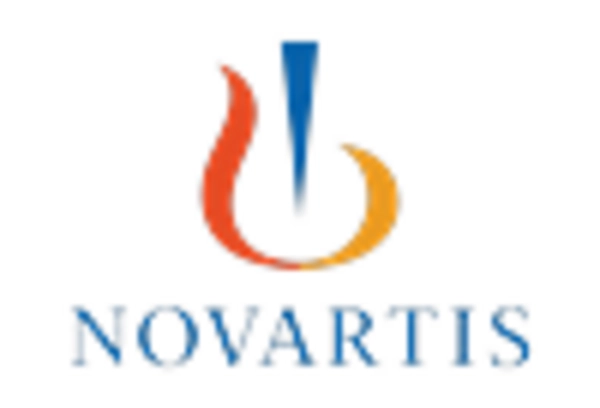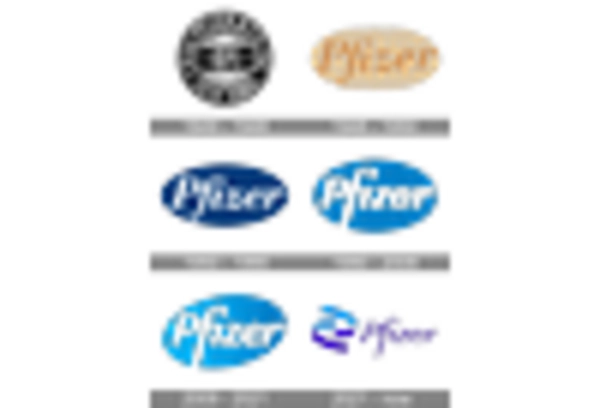Rising Demand for Personalized Medicine
The shift towards personalized medicine is emerging as a critical driver in the mitochondrial myopathy-diagnosis-treatment market. Patients are increasingly seeking tailored treatment options that consider their unique genetic profiles and disease manifestations. This trend is supported by advancements in genomics and biotechnology, which enable healthcare providers to develop individualized treatment plans. The market for personalized therapies is projected to grow substantially, with estimates suggesting a CAGR of over 10% in the coming years. As the focus on personalized medicine intensifies, the mitochondrial myopathy-diagnosis-treatment market is likely to evolve, offering more effective and targeted therapeutic solutions.
Increased Collaboration Among Stakeholders
Collaboration among various stakeholders, including pharmaceutical companies, research institutions, and patient advocacy groups, is driving growth in the mitochondrial myopathy-diagnosis-treatment market. These partnerships facilitate the sharing of knowledge, resources, and expertise, which is essential for advancing research and developing effective treatments. Collaborative efforts have led to the establishment of clinical trials and registries that enhance patient access to cutting-edge therapies. As these collaborations continue to strengthen, they are likely to yield significant advancements in the understanding and treatment of mitochondrial myopathy, thereby positively impacting the market.
Growing Investment in Rare Disease Research
The surge in investment for research into rare diseases, including mitochondrial myopathy, is a notable driver of the mitochondrial myopathy-diagnosis-treatment market. Public and private funding initiatives are increasingly focusing on rare genetic disorders, with the US government allocating substantial resources to support research and development. In 2025, funding for rare disease research is expected to exceed $1 billion, fostering innovation in treatment options and diagnostic methodologies. This influx of capital not only accelerates the development of new therapies but also enhances the understanding of mitochondrial diseases, thereby expanding the mitochondrial myopathy-diagnosis-treatment market.
Rising Prevalence of Mitochondrial Disorders
The increasing incidence of mitochondrial disorders, including mitochondrial myopathy, is a key driver in the mitochondrial myopathy-diagnosis-treatment market. Recent estimates suggest that mitochondrial diseases affect approximately 1 in 4,000 individuals in the US, leading to heightened demand for diagnostic and therapeutic solutions. As awareness of these conditions grows, healthcare providers are more likely to recognize symptoms and refer patients for testing. This trend is further supported by advancements in genetic testing, which enable more accurate diagnoses. Consequently, the market is expected to expand as more patients seek treatment options, thereby driving innovation and investment in the mitochondrial myopathy-diagnosis-treatment market.
Technological Innovations in Diagnostic Tools
Technological advancements in diagnostic tools are significantly influencing the mitochondrial myopathy-diagnosis-treatment market. Innovations such as next-generation sequencing (NGS) and advanced imaging techniques have improved the accuracy and speed of diagnosing mitochondrial myopathy. These technologies allow for the identification of genetic mutations associated with mitochondrial disorders, facilitating earlier intervention and personalized treatment plans. The market for diagnostic tools is projected to grow, with estimates indicating a compound annual growth rate (CAGR) of around 8% over the next five years. As healthcare providers increasingly adopt these technologies, the overall efficiency and effectiveness of the mitochondrial myopathy-diagnosis-treatment market will likely improve.

















Leave a Comment